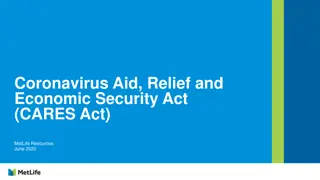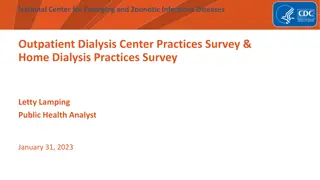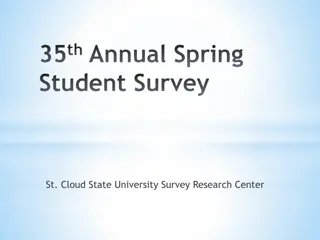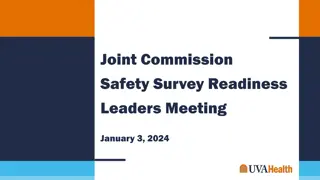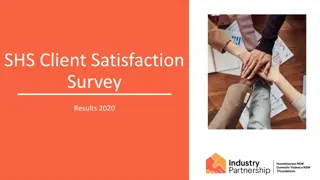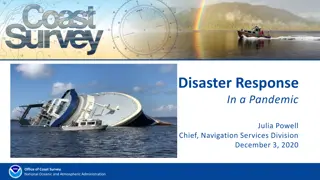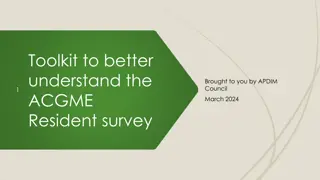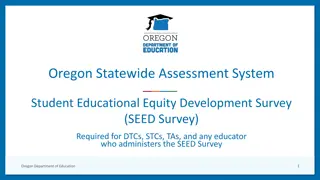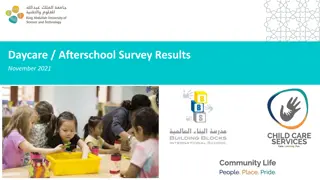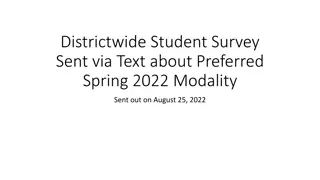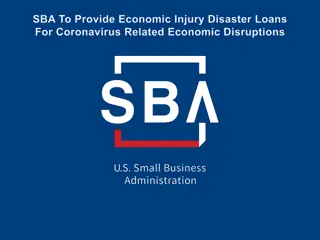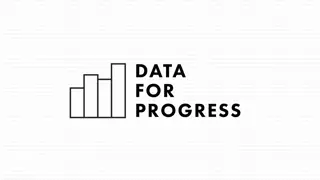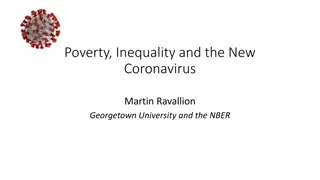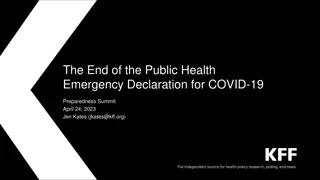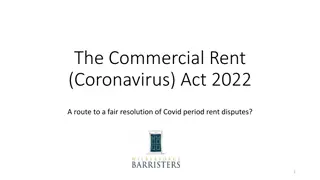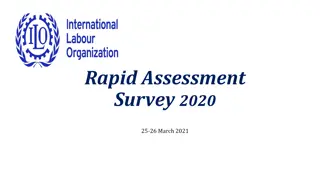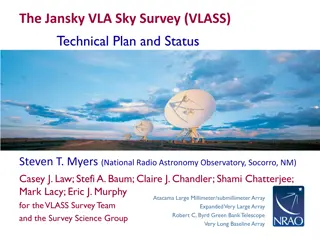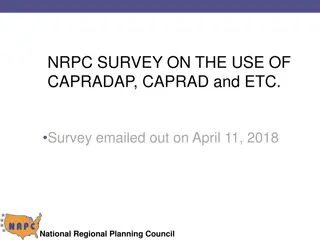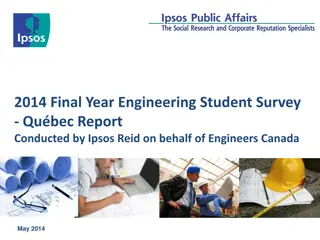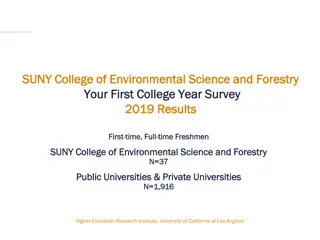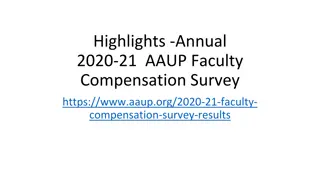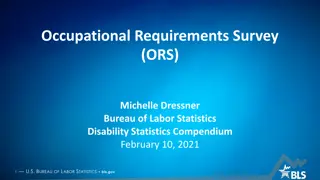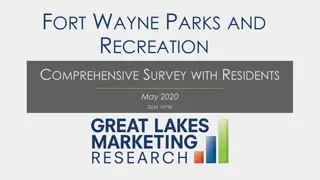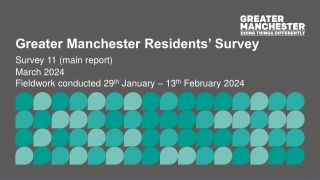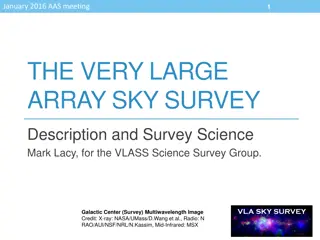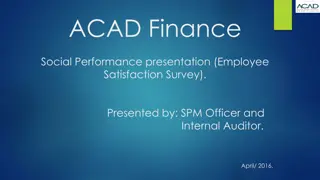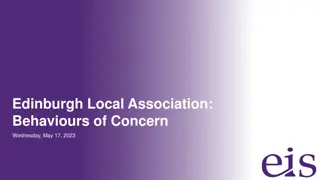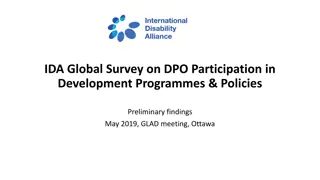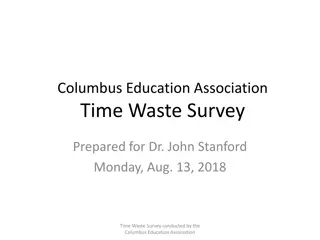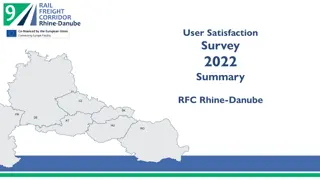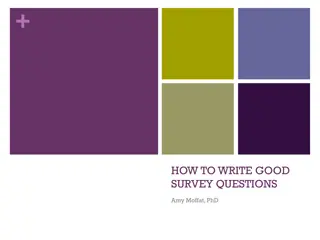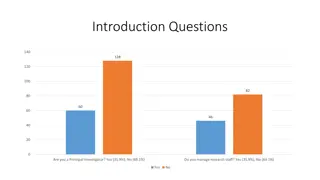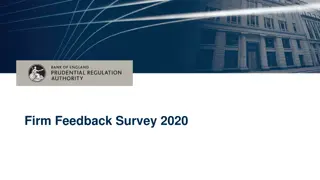Insights from 2020 Coronavirus Survey Series by EdWeek Research Center
The EdWeek Research Center conducted a series of surveys in 2020 to gather insights from K-12 teachers and administrators regarding the impact of the coronavirus pandemic on education. The surveys revealed a decline in teacher work hours and student learning time. Most teachers reported limited daily contact with students since school closures. Additionally, 21% of students were reported as essentially truant during the closures.
Download Presentation

Please find below an Image/Link to download the presentation.
The content on the website is provided AS IS for your information and personal use only. It may not be sold, licensed, or shared on other websites without obtaining consent from the author. Download presentation by click this link. If you encounter any issues during the download, it is possible that the publisher has removed the file from their server.
E N D
Presentation Transcript
2020 Coronavirus Survey Series Holly Kurtz, PhD Director, EdWeek Research Center
About the EdWeek Research Center Founded in 1997 Nonprofit and nonpartisan Director, Holly Kurtz, PhD, former education reporter, plus two staff members Independent research arm of Editorial Projects in Education Projects include: EWA State of the Education Beat (2016 and 2020) Quality Counts Support for EdWeek, EdWeek Market Brief data journalism
About the Coronavirus Survey Series Nationally-representative surveys of K-12 teachers and administrators [principals, superintendents, other district leaders] Online, questions generated by our staff, audience Dates in field [all 2020] and sample sizes March 10th & 11th: 1,165 educators [420 principals, 745 district leaders] March 24th & 25th: 911 educators [557 teachers, 354 district leaders] April 7th & 8th: 1,720 educators [1,096 teachers, 624 district leaders] April 22nd & 23rd: 1,107 educators [785 teachers, 322 district leaders] May 6th & 7th: 908 educators [599 teachers, 309 district leaders] May 20th & 21st: Currently in the field [teachers, principals, and district leaders]
Teacher Work Day Declines by 2 Hours, Student Learning Time Declines by 3 Hours Teachers Report Their Daily Hours Worked[5.7.20] Teachers Report Daily Time Students Spend Learning [5.7.20] Before schools closed due to coronavirus, approximately how many hours a day did your students spend learning? How many hours a day do you spend working right now? 7 6 Since schools closed due to coronavirus, approximately how many hours a day have your students spent learning? How many hours a day did you spend working this school year before schools closed due to coronavirus? 9 3
Most teachers do not have daily contact with most students Since your school closed due to coronavirus, how often have you interacted with the majority of your students? [Question asked of teachers only] 3.25.20 17% 24% 22% 38% 4.8.20 6% 13% 42% 39% 4.23.20 4% 9% 49% 38% 5.7.20 4% 9% 50% 37% Never At least once Weekly Daily or multiple times per day
21% of Students are Essentially Truant What percentage of your students are essentially truant during coronavirus closures (MIA, not logging in, not making contact with you, etc.)? [Teachers only, 5.7.30] What percentage of your students are essentially truant during coronavirus closures (MIA, not logging in, not making contact with you, etc.)?[Teachers only, 5.7.20] 27 25 29 28 22 19 11 DISTRICT POVERTY RATE IS 25% OR LESS 26 to 50 percent 51 to 75 percent More than 75 percent Elem Middle High
Learning Time Looks Different Which of the following approaches have you used during the Coronavirus closure? Select all that apply.[Teachers only. 3.25.20] Since schools closed, how, if at all, have you changed the amount of time you devote to the following aspects of teaching? [Teachers only, 5.7.20] 13% 60% Work is collected and returned online 40% 37% Sent home work/packets with students 61% 69% 71% I record myself teaching lessons that I post so students can access them on demand 34% Students/parents pick up work/packets in person 87% 32% Students interact with each other and with me during live classes I teach at specific, predesignated times 59% 21% 39% I interact with students during live classes that I teach online at specific, predesignated times-but students don t 31% 10% 29% 8% Send out/collect work via snail mail Presenting new, standards-aligned material Review Enrichment Student instruction [total amount] Troubleshooting problems with technology I teach live classes online at specific, predesignated times but don t/can t interact with students during those lessons 6% MORE TIME LESS TIME
Morale is Lower than Prior to Closures for Most Students, Teachers, Hourly Employees of the District Percentage of Teachers and District Leaders Who Say Morale for These Groups is LOWER Than Before the Coronavirus Closures 100% 90% 80% 70% 60% 50% 40% 30% 20% 10% 0% 3.25.20 4.8.20 4.23.20 5.7.20 Students Teachers Hourly employees Administrators
The Homework Gap Remains a Challenge School has at least one device for every student What percentage of your students share devices with parents, siblings or other family members and/or friends in order to complete their schoolwork during coronavirus? 45% More than 75% 56% 43% 74% More than 75 percent 59% 51 to 75% 57% 39% 51 to 75 percent 53% 72% 26 to 50% 68% 52% 26 to 50 percent 34% District percentage low- income students is 25% or less 96% 87% 54% 25 percent or less 29% High Middle Elementary None 1-10 11-50 more than 50
Inequities Arent Just About Technology Since your school closed due to coronavirus, how often have you interacted with the majority of your students? I have the knowledge and support I need to provide quality instruction during coronavirus closures. [PERCENT AGREE] 32% 33% 36% More than 75 percent 68% 50% 51 to 75 percent 69% 68% 67% 64% 50% 26 to 50 percent 68% DISTRICT POVERTY RATE IS 25% OR LESS 26 to 50 percent 51 to 75 percent More than 75 percent District percentage low- income students is 25% or less 83% Weekly or less Daily or more
Most District Leaders Say Spending Will Decrease in the Next Year: Predicted Decline is 15% Percent of District Leaders Who Predict Spending Will Decrease Over the Next Year 100% 90% 80% 70% 60% 60% 56% 50% 42% 42% 40% 30% 20% 10% 0% 3.25.20 4.8.20 4.23.20 5.7.20
Whats Next for Schools? Select all that apply. When it comes to opening schools during the 2020-21 school year, we have already planned for the following scenario(s): Planning for multiple scenarios, depending on advice of federal/state/local public health officials 70% We have not yet planned for any scenarios related to opening schools during the 2020-21 school year 26% Traditional, in-person instruction in typical classroom arrangements, pre-COVID-19 16% Part in-person/part remote learning (students alternate days they actually attend in-person school) 14% In-person school with new classroom, lunch, recess, etc. arrangements to adhere to social distancing practices 12% Start the year in full remote learning, with transition to in- person as public health officials advise is safe 9% Other, please specify 3%
Whats Next for Support Services? What supports/services are you planning to provide in the 2020-21 school year to help students and staff transition safely back to in-person instruction or to continue with remote learning? Select all that apply. Instructional interventions for students who are behind academically 78% Social-emotional learning programming 55% Mental health services/referrals for students 53% Nurses to conduct temperature/wellness checks for students and staff 40% Mental health assessments for students 25% Other, please specify 11% We will not provide any new services and supports 6%
Whats Next for the Survey? Summer learning plans Re-opening plans Educator plans to leave/return Educator perceptions on re-opening/precautions Results for this week s survey should be released next week Next survey after that: June 3-4
Holly Kurtz hkurtz@educationweek.org



